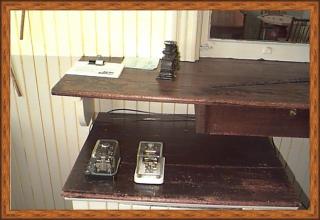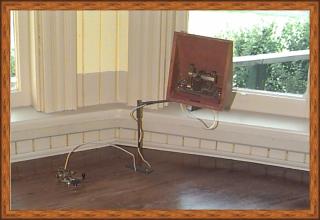
The electric telegraph was invented by an American named Samuel Morse and was patented in 1838. It was a single-wire telegraph and messages could be typed and received at a speed of 10 words per minute. The letters were then written out by hand and made into sentences and paragraphs accordingly. This particular telegraph was used to convey messages between train stations. Before the invention of the telephone, this was the fastest and most reliable way of communication between long or even short distances. One of the station master's many requirements was to know Morse Code. Morse Code is a series of dots and dashes which represent letters and numbers. A dot on the telegraph sounded like a short tap; a dash was a little longer. The following is a list of the codes used for each letter and number:
| A .- | B -... | C -.-. | D -.. | E . | F ..-. |
| G --. | H .... | I .. | J .--- | K -.- | L .-.. |
| M -- | N -. | O --- | P .--. | Q --.- | R .-. |
| S ... | T - | U ..- | V ...- | W .-- | X -..- |
| Y -.-- | Z --.. | 0 ----- | 1 .---- | 2 ..--- | 3 ...-- |
| 4 ....- | 5 ..... | 6 -.... | 7 --... | 8 ---.. | 9 ----. |
![]()





